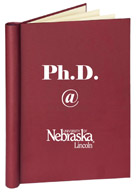Graduate Studies, UNL

Dissertations and Doctoral Documents, University of Nebraska-Lincoln, 2023–
First Advisor
Leon G. Higley
Degree Name
Doctor of Philosophy (Ph.D.)
Committee Members
Amanda Roe, Karl Reinhard, Tiffany Heng-Moss, William Belcher
Department
Natural Resource Sciences (Applied Ecology)
Date of this Version
5-2025
Document Type
Dissertation
Citation
A dissertation presented to the faculty of the Graduate College at the University of Nebraska in partial fulfillment of requirements for the degree of Doctor of Philosophy
Major: Natural Resources Sciences (Applied Ecology)
Under the supervision of Professor Leon G. Higley
Lincoln, Nebraska, May 2025
Abstract
The determination of the postmortem interval (PMI) is essential for the investigation and successful prosecution of suspected cases of homicide. While the forensic pathologist might be able to draw fairly accurate conclusions during the initial 24–36 hours, beyond this period, the assistance of other experts like forensic entomologists and taphonomists would be required. The present study was designed to observe the postmortem changes in Sus scrofa placed in a cage in Nebraska, located in the American Central Great Plains. The setting is in an open grassland in late spring to early summer. The observed variables with respect to biotic and abiotic factors affecting the activities of necrophagous insects native to Nebraska, and the interplay between the environment and the carrion were studied. The result revealed delayed decomposition caused by late oviposition precipitated by low ambient temperature and rainfalls typical of the season, as well as the invasion of the carrion by silphids and the attendant predatory action on the eggs and larvae of the necrophagous insects. These two factors are mainly responsible for the observed increase in the PMI. When the results are directly extrapolated to humans, it can be assumed that a decedent placed within the same taphonomic setting will start showing signs of skeletonization after 39 days of being deposited in the open grassland of the Central Great Plain.
Advisors: Leon G. Higley
Recommended Citation
Obafunwa, John Oladapo, "Influence of Biotic and Abiotic Factors on Decomposition and the Determination of Time Since Death: Applications of Forensic Entomology and Taphonomy" (2025). Dissertations and Doctoral Documents, University of Nebraska-Lincoln, 2023–. 262.
https://digitalcommons.unl.edu/dissunl/262


Comments
Copyright 2025, John Oladapo Obafunwa. Used by permission